
The Trek in a snapshot
Location
San Rafael Reef, Utah
Managing Agency
BLM
Pets
Allowed
Fees
None
Restrooms
None
Camping
Not allowed in this area. There are two nearby campgrounds
Trail Condition
Good dirt trail with some sandstone. Short trail
Sights
Fremont Style pictographs and also Barrier Canyon Style pictographs
Water Info
Bring a bottle of water if needed
Best Season
All
Distance
About 0.05 mile roundtrip. Very short trail
Time Required
Less than 15 minutes
Parking Elevation
5351 ft
Summit Elevation
5360 ft
Elevation Difference
9 ft

Trek Planner Maps
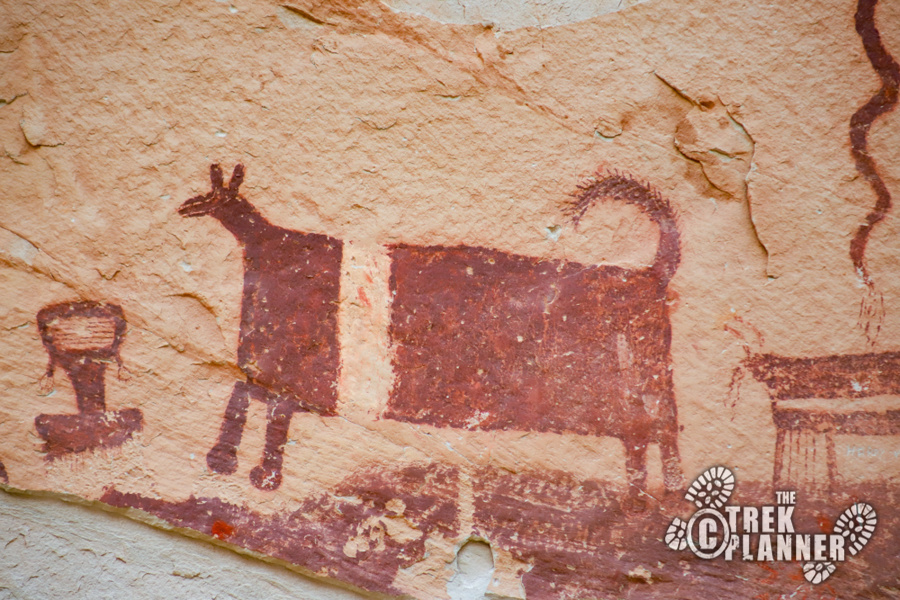
Parking: 38.66059, -110.66933
Pictograph Panel: 38.66103, -110.66881

Experience. Discover. Explore.
Follow along on our adventure then go out on your own!




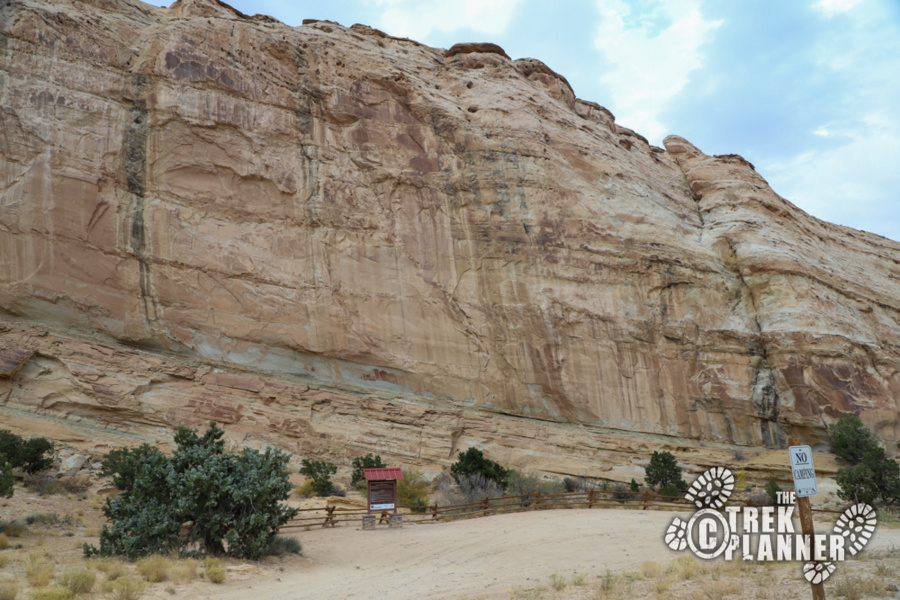
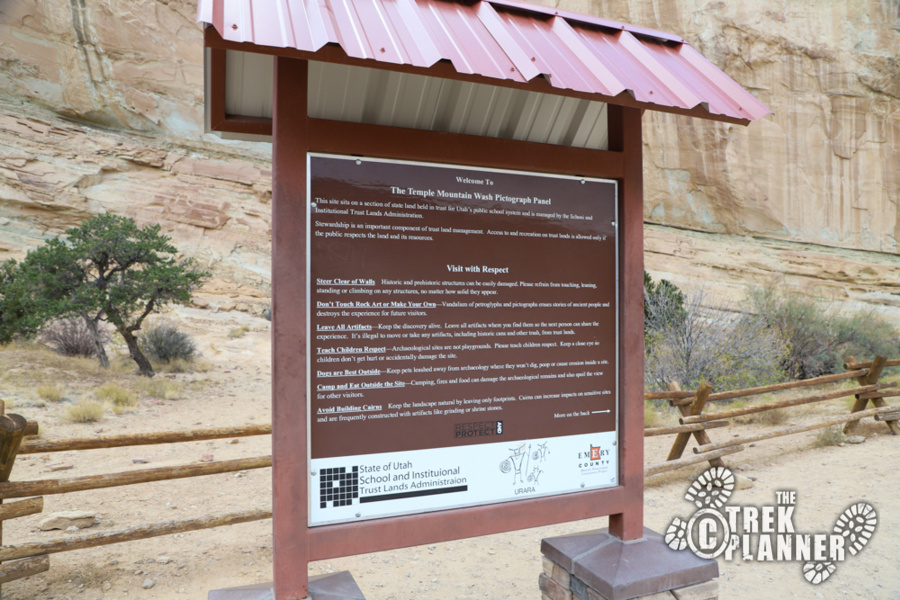
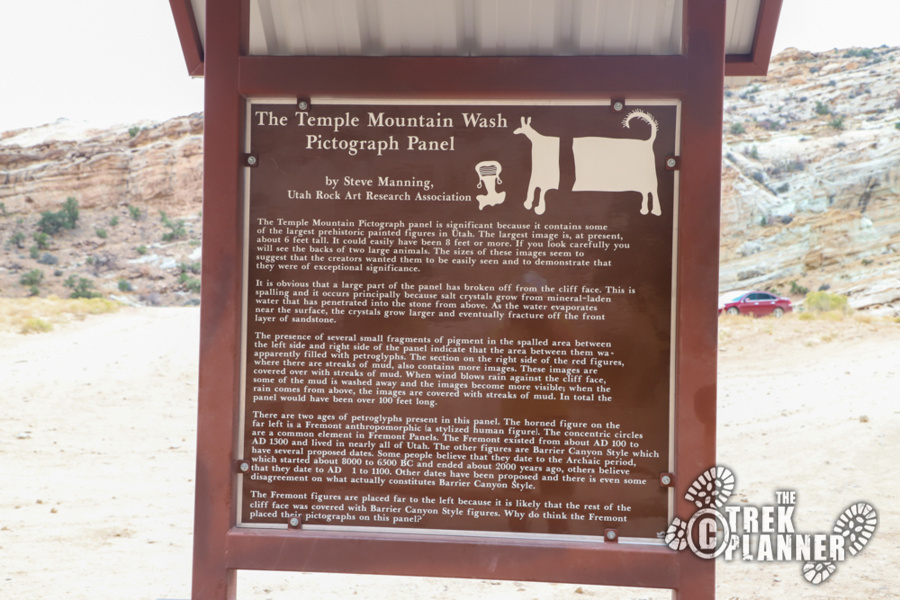
This is an easily accessible pictograph panel right off the side of the road. There is a sign pointing you to the parking and you drive the few hundred feet to where you park. The pictograph panel can be seen right from the parking area and won’t take more than a few minutes to see up-close. Sadly, due to the easy accessibility, these have been heavily vandalized and even shot at with rifles.
On this large panel, you will see dogs, other animals, human figures, and symbols. I love the depiction of the dog with the hairs on its tail painted individually. Some of these pictographs are over 6 ft tall! There are some odd looking depictions on this panel. Especially the half-drawn figure just to the left of the dog.
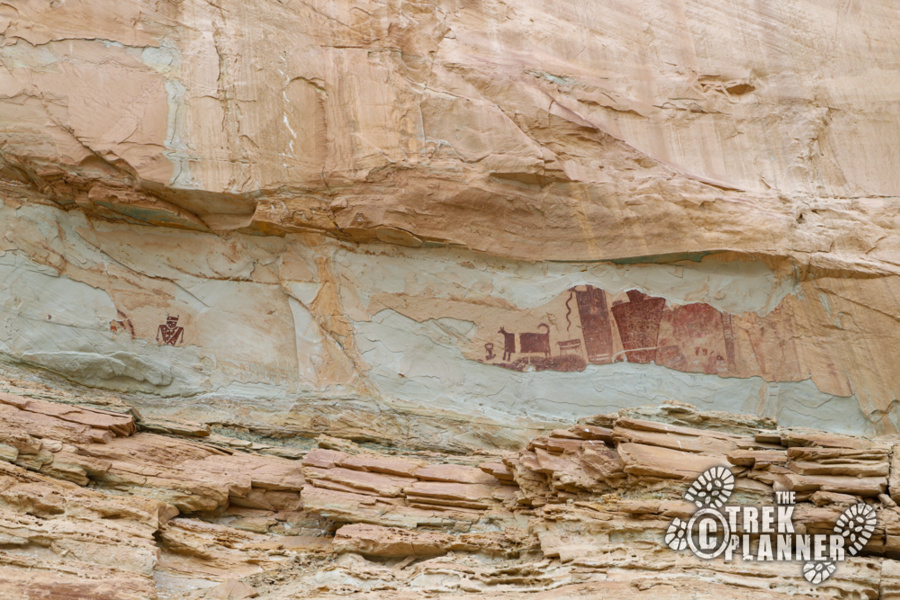

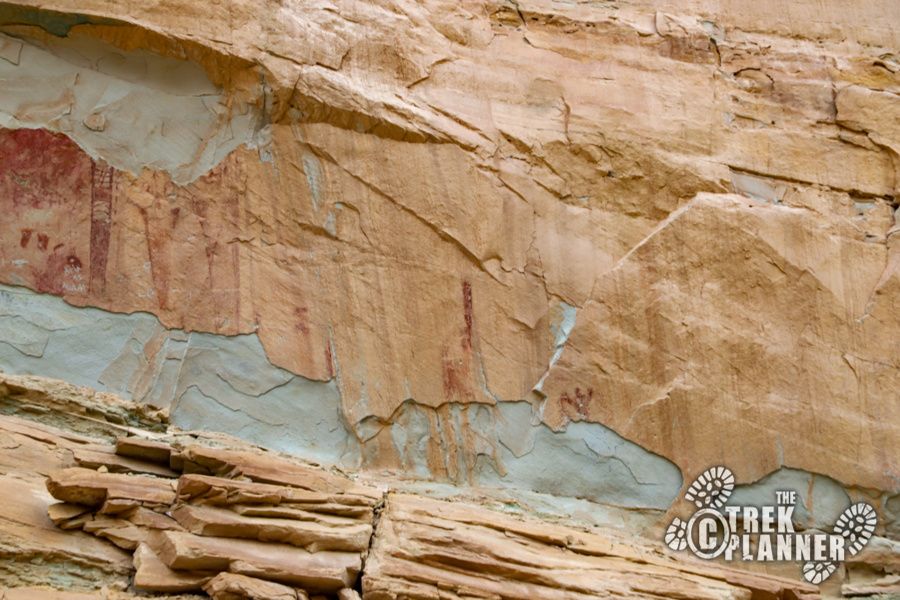
There are two types of pictographs styles on this panel: Fremont and Barrier Canyon Style. The Fremont drew the human figure on the far left. The Barrier Canyon Style pictographs are the very large human figures with no arms. The Barrier Canyon Style of pictographs were created in a canyon currently called Horseshoe Canyon which is about 30 miles away to the east.
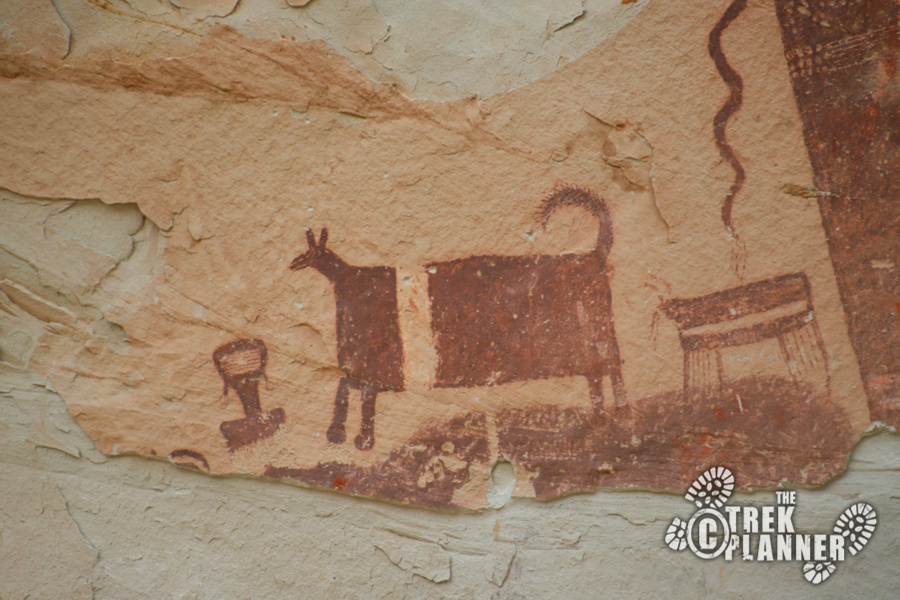
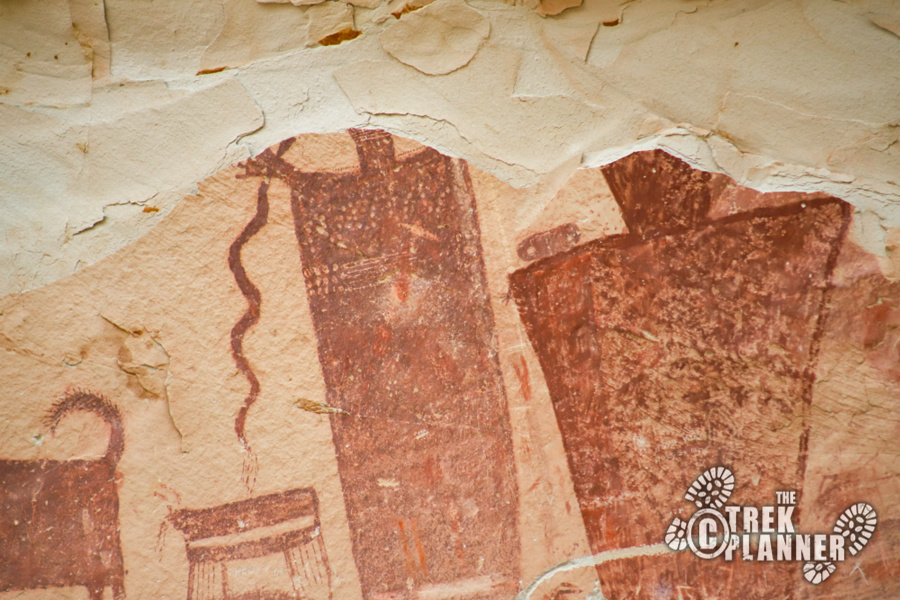
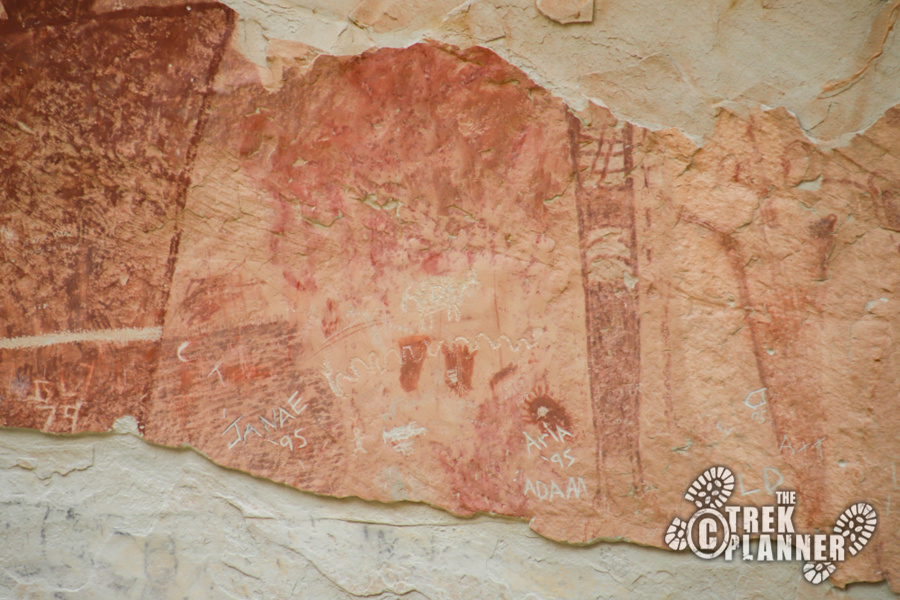
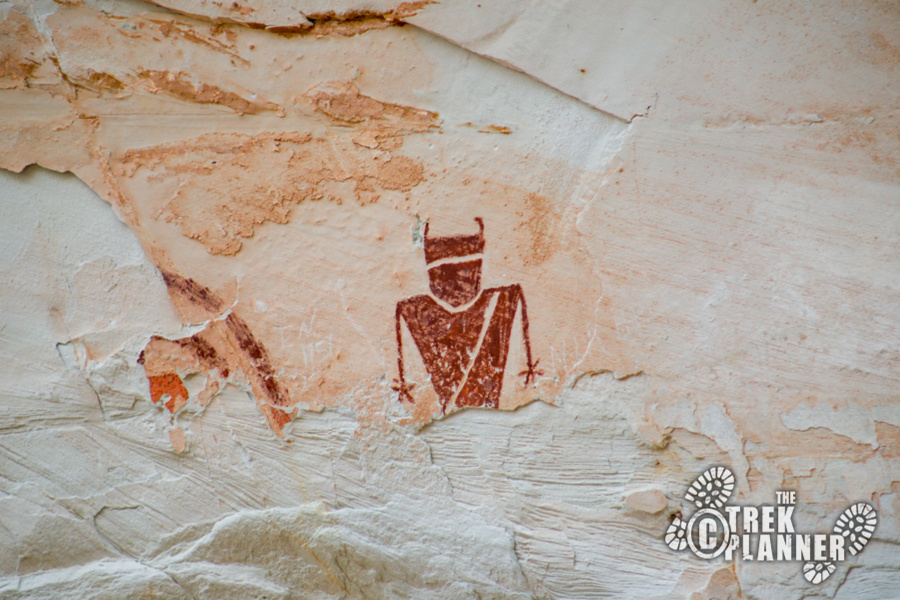
The Fremont peoples were aware of Barrier Canyon style pictographs since the Fremont added their own pictographs long after the other ones were there. I wonder what the Fremont thought of the other pictographs? Did they wonder just as much as we did about the meaning?

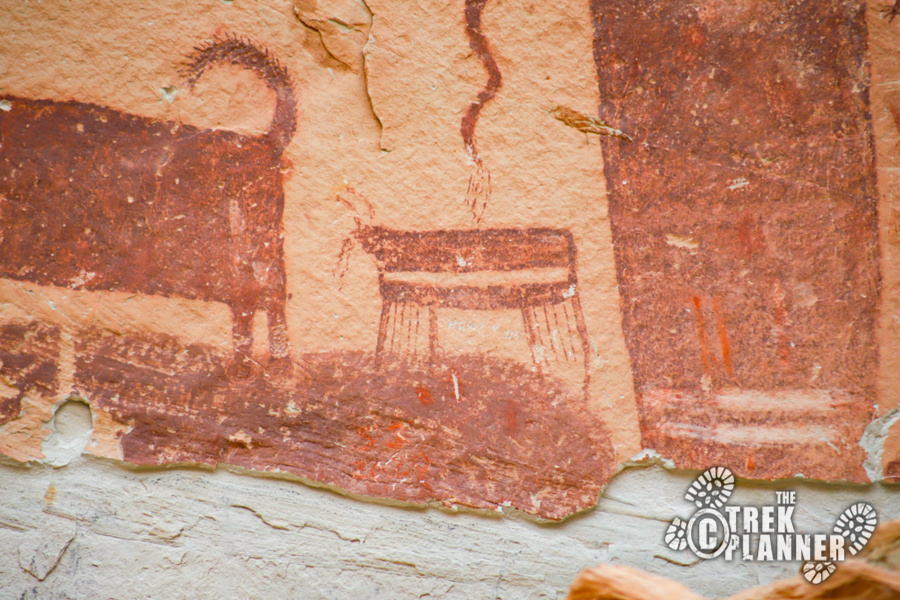
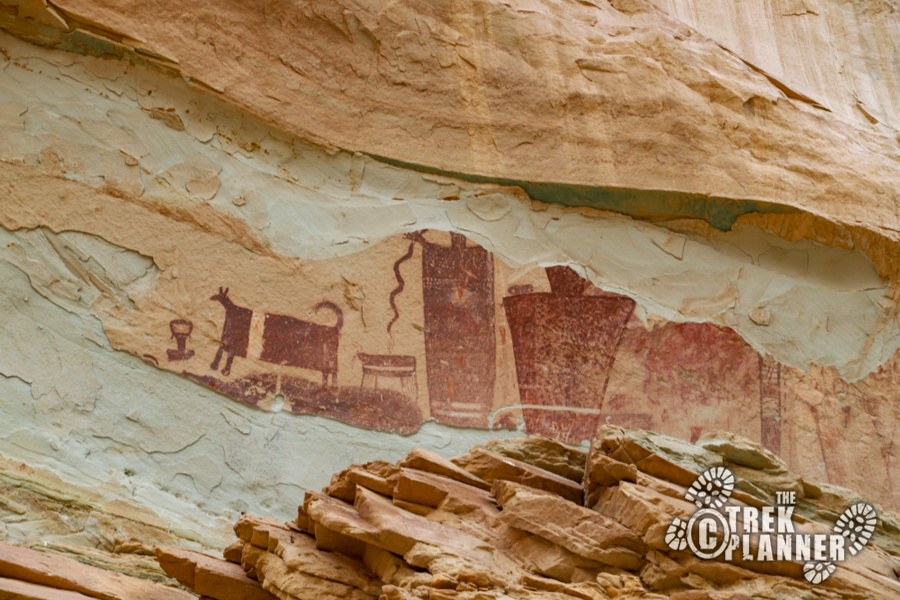
Please be respectful of the rock art and do not touch or deface them.
There is an information sign at the parking. This is what the back of the sign says:
The Temple Mountain Pictograph panel is significant because it contains some of the largest prehistoric painted figures in Utah. The largest image is, at present, about 6 feet tall. It could easily have been 8 feet or more. If you look carefully you will see the back s of two large animals. The sizes of these images seem to suggest that the creators wanted them to be easily seen and to demonstrate that they were of exceptional significance.
It is obvious that a large part of the panel has broken off from the cliff face. This is spalling and it occurs principally because salt crystals grow from mineral-laden water that has penetrated into the stone from above. As the water evaporates near the surface, the crystals grow larger and eventually fracture off the front layer of sandstone.
The presence of several small fragments of pigment in the spalled area between the left side and right side of the panel indicate that the area between them was apparently filled with petroglyphs. The section on the right side of the red figures, where the streaks of mud, also contains more images. These images are covered over with streaks of mud. When wind blow rain against the cliff face, some of the mud is washed away and the images become more visible; when the rain comes from above, the images are covered with streaks of mud. In total the panel would have been over 100 feet long.
There are two ages of petroglyphs present in this panel. The horned figure on the far left is a Fremont anthropomorphic stylized human figure. The concentric circles are a common element in Fremont Panels. The Fremont existed from about AD 100 to AD 1300 and lived in nearly all of Utah. The other figures are Barrier Canyon Style which have several proposed dates. Some people believe that the date to the Archaic period, which started about 8000 to 6500 BC and ended about 2000 years ago, others believe that they date to AD 1 to 1100. Other dates have been proposed and there is even some disagreement on what actually constitutes Barrier Canyon Style.
The Fremont figures are placed far to the left because it is likely that the rest of the cliff face was covered with Barrier Canyon Style figures. Why do you think the Fremont placed their pictographs on this panel?
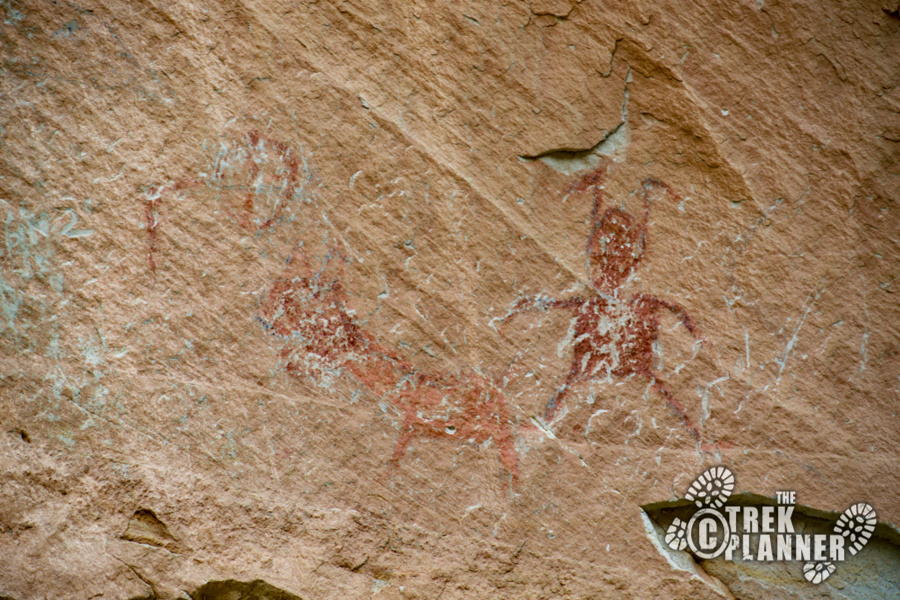

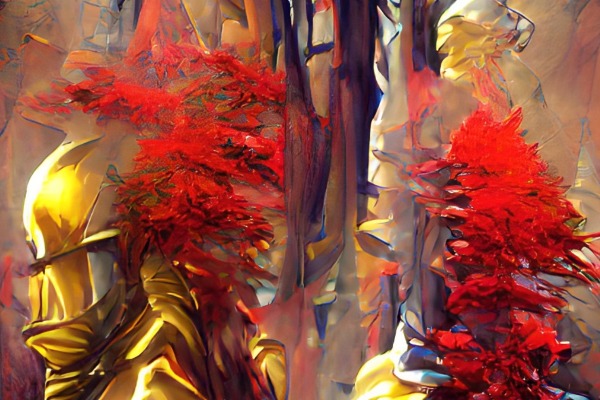
Personal Thoughts
I loved seeing the Temple Mountain Pictographs! This is a must-see quick stop on your way to Goblin Valley or if you are in the area! It's a quick stop to see a site that has important historical significance.


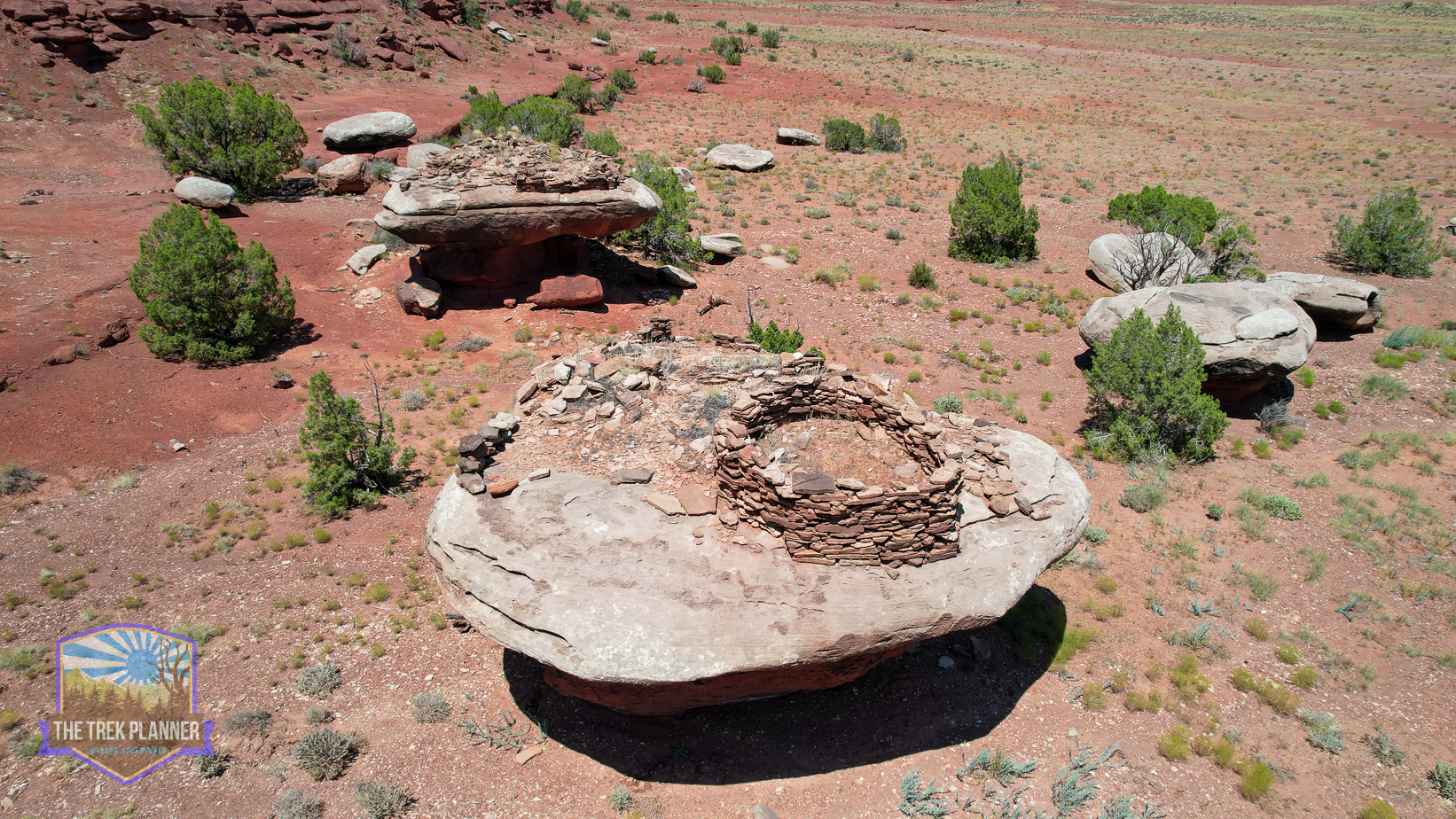
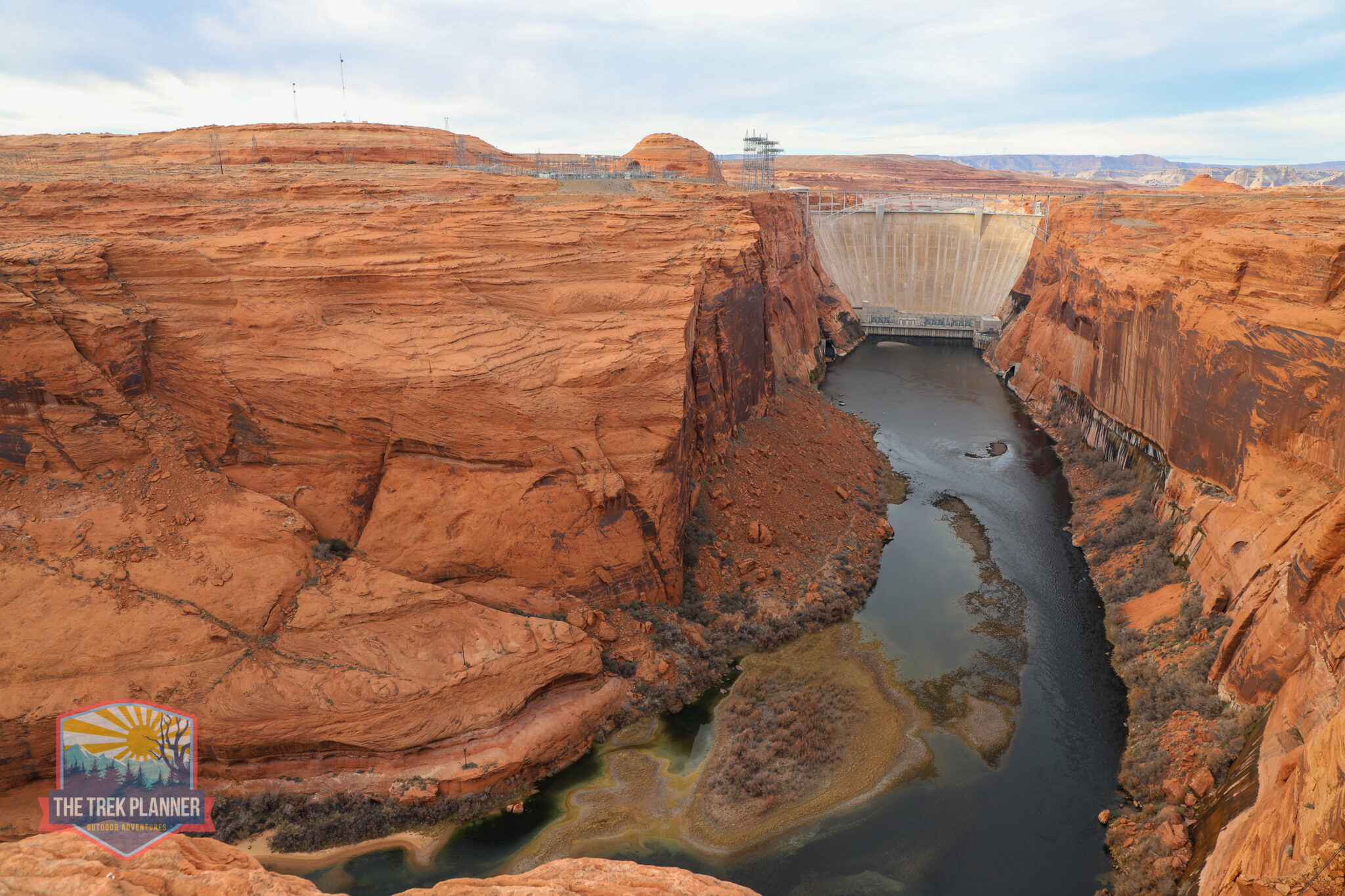

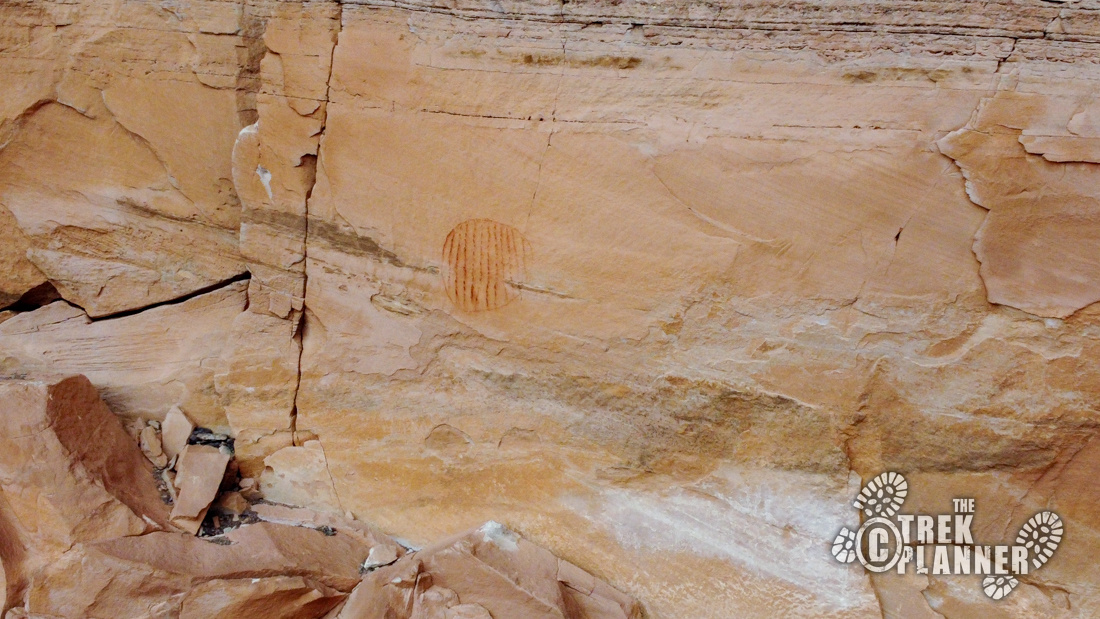
[…] them while I was hiking. I knew there were already some rock art in the area to the west at Temple Mountain and also to the east of me in Horseshoe Canyon, so it was possible that rock art could be found in […]
[…] For our full Trek and guide, please visit this link to Temple Mountain Wash Pictograph Panel. […]